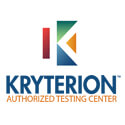Installation, Storage, and Compute with Windows Server 2016 (70-740)
About This Course
The MCSA Windows Server 2016 course: Installation, Storage and Compute with Windows Server 2016 prepares you for 70-410 exam and is your primary step towards your MCSA certification. The course covers all the technologies, terminologies and concepts pertaining to MCSA certification and offers you an opportunity to apply the expertise in real-world environment or scenarios.
The Installation, Storage and Computer with Windows Server 2016 certification course is aimed at IT professionals, who possess some amount of experience with Windows Servers and wish to improve their expertise with advance technologies that the Server 2016 offers.
The course offers a detailed understanding of the MS Hyper-V environment including knowledge of network load balancing, automated backups, disaster recovery, fault tolerance and highly availability. The course also covers key storage concepts along with basic principles and tricks required for configuring local storage.
Who Should Attend This Course
- This course is aimed at IT experts involved in installing, deploying, managing and maintaining Windows Server environments.
Related job functions are as follows:
- System Engineer
- Network Engineer
- Network Administrator
- System Administrator
Why This Course
The Installation, Storage and Compute prepares you for 70-410 exam and is the vital step towards MCSA certification. The course covers various technologies and concepts to help you achieve your MCSA certification besides offering you the opportunity to apply the skills in real-world environments.
After completing this course, you will learn the following:
- Upgrade and install Microsoft Windows Server 2016
- Understand features of Microsoft Windows Server 2016
- Troubleshoot and offer technical support
- Configure local storage
- Understand storage protocols and technologies such as NAS, SAN, FCoE, FC, iSCSI and DAS
- Understand storage functionalities like data snapshots, deduplication, etc.
- Use MS Hyper-V for virtualization of storage and compute environments
- Disaster recovery and high availability using MS Hyper-V
- Configure fault-tolerant compute and storage system
- Perform network load balancing
- Monitor upgrades using WSUS
- Implement Windows Containers
- Maintain and monitor server environments
Course Objectives
- Install Windows Server in Host and Compute Environments
- Implement Storage Solutions
- Implement Hyper-V
- Implement Windows Containers
- Implement High Availability
- Maintain and Monitor Server Environments
Course Prerequisites
- Professionals interested for this training need to have certain amount of experience in system administration and basic understanding of MS Windows environments.
- Knowledge of storage and networking protocols is added bonus.
Course Benefits
After completing this course, you will learn the following:
- Upgrade and install Microsoft Windows Server 2016
- Understand features of Microsoft Windows Server 2016
- Troubleshoot and offer technical support
- Configure local storage
- Understand storage protocols and technologies such as NAS, SAN, FCoE, FC, iSCSI and DAS
- Understand storage functionalities like data snapshots, deduplication, etc.
- Use MS Hyper-V for virtualization of storage and compute environments
- Disaster recovery and high availability using MS Hyper-V
- Configure fault-tolerant compute and storage system
- Perform network load balancing
- Monitor upgrades using WSUS
- Implement Windows Containers
- Maintain and monitor server environments





























